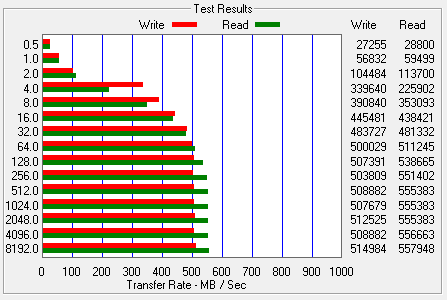Toshiba Portégé Z835-P330 Ultrabook Review
SiSoft SANDRA, ATTO, & Cinebench
![]()
SiSoft SANDRA
Synthetic General Performance Mertrics


SANDRA CPU Arithmetic and Multimedia Performance


SANDRA Memory and Physical Disk Performance
On its own, the Z835-P330 isn't exactly a slouch, and it still benefits from Intel's Sandy Bridge architecture, DDR3-1333 memory, and an SSD, albeit a subdued one. Just temper your expectations of winning any benchmarking records.
We were so impressed with the SSD performance numbers with our first round of ultrabooks that hit the lab, that we had to double check with ATTO to make sure everything was on the level. Here's how it shook out:

Asus Zenbook UX21

Toshiba Portégé Z835-P330
|
Maxon's Cinebench R11.5 benchmark is based on the company's Cinema 4D software used for 3D content creation and tests both the CPU and GPU in separate benchmark runs. On the CPU side, Cinebench renders a photorealistic 3D scene by tapping into up to 64 processing threads (CPU) to process more than 300,000 total polygons, while the GPU benchmark measures graphics performance by manipulating nearly 1 million polygons and huge amounts of textures.

We're less concerned with how the Z835-P330 fares in Cinebench simply because you're not going to do much 3D rendering, CAD design, or other professional-level work chores on this machine. It does give us another point of comparison, however, which is why we include it. Overall, the Z835-P330 put up respectable numbers for a system that lacks a dedicated GPU, with part of the credit owed to Intel's improved graphics drivers and integrated graphics core technology.






